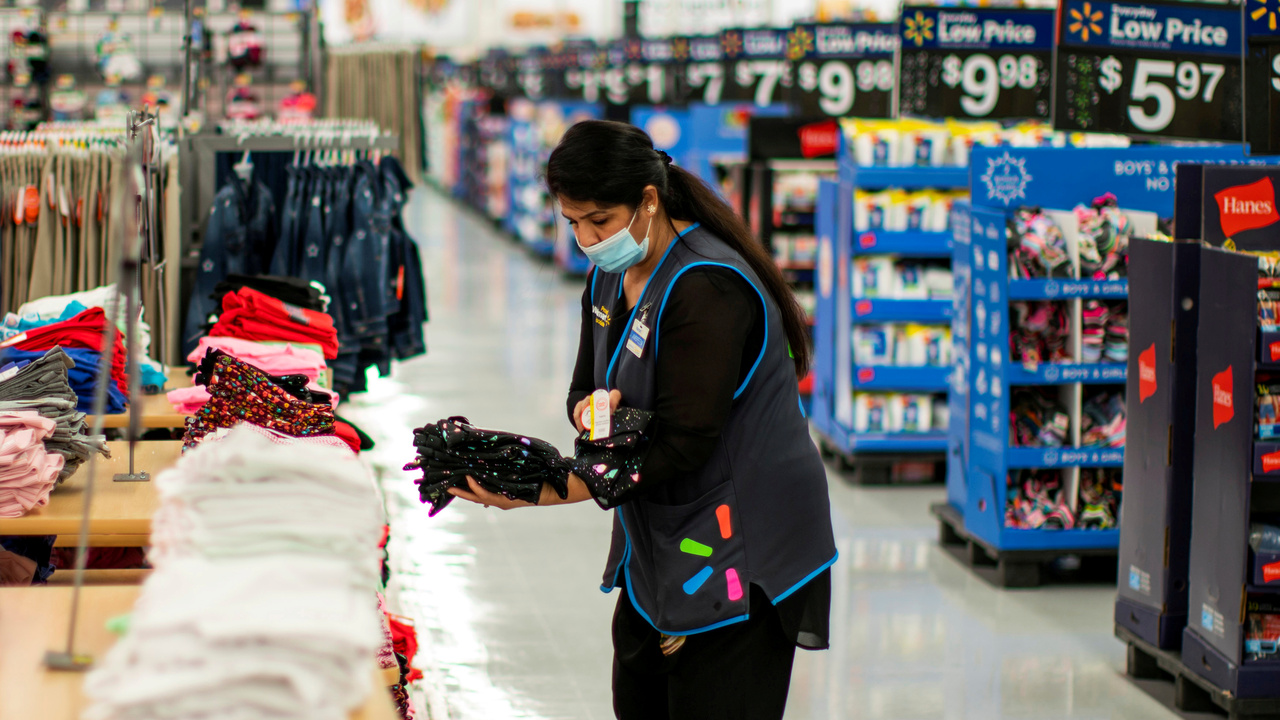Covid-19 accelerates change for retail chains
As consumers embrace the Web, retailers must rethink operations or risk irrelevancy
Sign up now: Get ST's newsletters delivered to your inbox

Chains that do not evolve quickly, or have the resources to do so, will struggle to survive.
PHOTO: REUTERS
Follow topic:
(BLOOMBERG) - A year of Covid-19 has dramatically accelerated the transformation of big-box stores into e-commerce warehouses, causing ripple effects for hourly workers and a struggling real estate sector.
American shopping centre mainstays Walmart, Best Buy and others are becoming fulfilment centres, where workers assemble local deliveries and socially distanced consumers wait in parking spaces for their boots to be filled. Space once devoted to T-shirts and television sets will now be used to pick and pack online orders or generate revenue by displaying advertisements for big brands like Samsung.
There is no going back because consumers have embraced the Web like never before during the pandemic. Stores will be smaller and integrated with digital operations, or risk becoming irrelevant.
"Today's customer is in charge," said Mr Mark Cohen, director of retail studies at Columbia Business School. "They are no longer handcuffed to the mall near their home. They can browse anywhere and buy anywhere. They are calling the shots, and they will not relinquish that."
It was a about year ago when Covid-19's alarming spread pushed retailers big and small to shutter in the United States. Sales plummeted overnight, triggering a rash of store closures, layoffs and bankruptcies.
Meanwhile, chains deemed essential by local governments, including Walmart, Kroger and Home Depot stayed open and reaped the rewards of booms in cooking and home upgrades.
But as the pandemic fades, spending will shift back to dining out, travel and other leisure experiences - putting more pressure on chains to keep making shopping easier to meet these new consumer expectations.
This next phase of retail could be as agonising for the industry as the initial boom in e-commerce more than a decade ago that wiped out many companies.
Much like then, chains that do not evolve quickly, or have the resources to do so, will struggle to survive.
"What you will see this year is a rethinking of store space, and how we use it," said Ms Mary Brett Whitfield, who leads the shopper insights research team at consultant Kantar. "Retailers will downscale the size of the store that's shoppable."
In Target's case, 12 million customers who previously shopped only one way - in stores, or online - began to do both last year. Those using digital options like its drive-up service displayed a higher rate of "stickiness", or likelihood to shop again, chief executive Brian Cornell said.
And the answer is not always found online. Target is also opening new "mid-sized" stores that bridge the gap between traditional big boxes and small-format locations, while Burlington Stores recently doubled its long-term expansion target to 2,000 locations, most of which will be shrunk-down versions of its coat emporiums.
At Best Buy, the electronics retailer reduced the square footage devoted to displays by nearly half in a handful of locations. That frees up space to fulfil digital orders, which accounted for 43 per cent of sales during the holiday quarter, up from 25 per cent just a year ago. The smaller sales floors contain fewer items, a shift from the chain's heyday when it displayed row upon row of gadgets.
An initial test of four stores worked well enough that CEO Corie Barry is expanding it.
"The customer has completely changed the way they are thinking of shopping," Ms Barry said. "We are doing all we can to adjust to that new reality."
Alert Innovation, a start-up that designs these futuristic systems, says its technology will allow for "a new kind of supermarket", one where shoppers can still browse for that perfect steak while robots assemble the rest of their order.
With grocery industry sales expected to decline this year for the first time in more than 20 years, according to UBS analyst Michael Lasser, food stores need to take steps now.
International retailers are adapting as well.
The European owners of the Zara and H&M apparel chains both plan to reduce their store counts this year and put more focus online.
With supply chains upended by the pandemic, Zara owner Inditex benefited from investments it made years ago to add radio frequency identification tags to its garments, providing a real-time view of its inventory of blouses and skirts.
Stores in the US and abroad will also increasingly serve as proving grounds for alternate, more profitable sources of revenue, such as advertising, healthcare and financial services.
Walmart, Target and Kroger have seen the massive advertising unit Amazon.com created and want to do the same by delivering ads for big brands both online and through interactive displays in their stores. Walmart said last month that its nascent advertising platform, Walmart Connect, will be bigger than those of media giants like Fox and Twitter within five years.
Retailers "have to get away from just selling items", Mr Dan Stanek, an executive vice-president at retail consultants WD Partners. "It's all being rethought now."

